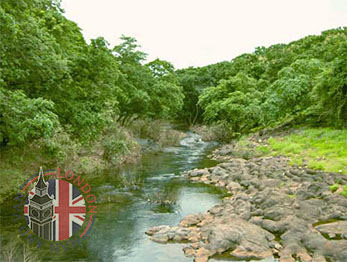
The Largest Urban Parks In The World
Public parks are an integral part of the urban environment in modern cities. The first community sponsored parks were created in Britain in the 1840s, but surprisingly enough the largest parks in the world today are not even in Europe. Urban parks, spanning vast areas, have evolved from their initial concept to become crucial green spaces within the metropolitan area, serving not only as recreational areas but also as crucial lungs for cities.
- The crown of the largest urban park in the world belongs to Serra da Cantareira located in the outskirts of Sao Paolo in Brazil. The park covers a territory of 160 124 acres (nope, not a typo). This park is considered a significant green space, contributing to the preservation of the natural environment within the bustling metropolitan area of Sao Paulo. The park is located to the immediate north of the city, and it is really popular with locals who come to enjoy the trails and paths that run through all corners of the park like a spider’s web. Pico do Jaraguá is the highest point of Sao Paolo. Serra da Cantareira is also the place where the plane of the famous Brazilian rock band Mamonas Assassinas crashed, respectively it has become a place of vigils and remembrances too.
- Chugach State Park in Anchorage, Alaska, is one of the largest state parks within the United States, covering over 495,000 acres. This park, nestled in the south east of the city, is a prime example of efforts to preserve local flora and fauna while offering several hiking trails for outdoor enthusiasts.
- Another major and part of the largest urban park chart, this time spanning at the modest 74 131 acres is to be found in the city of Guadalajara in Mexico. It is of course the Bosque de la Primavera national park, which is considered to be the best urban park in Latin America. The park, a crucial part of the city’s park system, acts as a natural reserve that helps in maintaining the ecological balance and providing a fresh breath of air to the city’s residents. Guadalajara is primarily a tourist destination, and as such the park is visited frequently by tourists as well as the usual suspects – the locals.
- South Mountain Park in Phoenix, Arizona, stands as one of the largest city parks in the United States, sprawling over 16,000 acres. This regional park serves as a prime example of how urban parks can encompass extensive natural landscapes within city limits, offering numerous recreational opportunities including hiking, biking, and horseback riding.
- Table Mountain National Park is the vastest urban park in Africa. Located in Cape Town in South Africa, it covers 60 070 acres. The park is not only a nature reserve but also includes historical sites and a botanical garden, making it a popular visitor destination. It was built with the idea of protecting the natural diversity of the eponymous Table Mountain. With its rich biodiversity and scenic beauty, Table Mountain National Park is a vital green space for the Cape Town area, helping to preserve local flora and fauna. The place is so vast that you will actually forget that you are in an urban park while you are walking about the many trails.
- The only urban park that makes it to the top ten and is located in Europe is the 28 717 acresLosiny Ostrov National Park in Moscow, Russia. It is the first national park in Russia and after Table Mountain and Pedra Blanca in Rio de Janeiro, it is actually the third largest forest located within a city in the world. This park, once a royal hunting ground, is now a beloved enclosed urban park, offering residents and visitors alike a chance to immerse themselves in nature without leaving the city. In the past the territory of the park was a hunting area that was preserved exclusively for the nobility and the Russian tsar. The park itself was created by the power of a government act in 1987.
 Sanjay Gandhi National Park in the state of Mumbai, India is another major open space in an urban environment. It covers a little over 25 000 acres, and offers visitors great scenery and exotic wildlife particularly appealing to tourists who visit the state.
Sanjay Gandhi National Park in the state of Mumbai, India is another major open space in an urban environment. It covers a little over 25 000 acres, and offers visitors great scenery and exotic wildlife particularly appealing to tourists who visit the state.- Bukhansan National Park, located in the northern part of Seoul, South Korea, is renowned for its rugged mountainous terrain, ancient temples, and more than 100 kilometers of hiking trails. This park, despite its proximity to the urban area, serves as a quick escape to nature for Seoul’s residents and is among the biggest city parks in the world.
In addition to the celebrated urban parks mentioned, Margalla Hills National Park in Islamabad stands out as a stunning public park, offering breathtaking views and diverse wildlife. Similarly, the Regional Park in San Diego provides a peaceful retreat with its vast landscapes. Chugach State Park’s natural beauty is unmatched, while Losiny Ostrov National Park presents a unique blend of history and nature. Each park, whether it’s the largest city park or a regional park in Rome, contributes significantly to the urban fabric, offering residents and visitors a precious slice of nature.
Curiously enough, even though Britain was home to the first public parks in history, only three of the present day urban spaces in the country make it to the list of areas of more than 1000 acres – Sutton Park in Birmingham, Richmond Park and Bushy Park in London. These parks, rich in history and natural beauty, continue to be some of the most desirable green spaces, attracting both locals and tourists alike. The trend, as explained by man and van experts, is that those areas contain the most desirable residential properties in their respective cities.
This correlation highlights the importance of public parks in enhancing the quality of urban living, not just as recreational areas but also as key factors in the valuation of nearby properties.
About author
-

-
Jeremy Oliver
Previously serving as a logistics coordinator, Jeremy's comprehensive understanding of the industry gives him the ability to translate complex procedures into easy-to-understand blog posts. He has a particular knack for tackling the intricacies of London's removals scene, from the congested roadways to the unique challenges of navigating historic neighborhoods. As an authentic Londoner, Jeremy combines practical knowledge with his inherent love for the city, offering readers not only information on man with van removals but also local insights and valuable tips.

